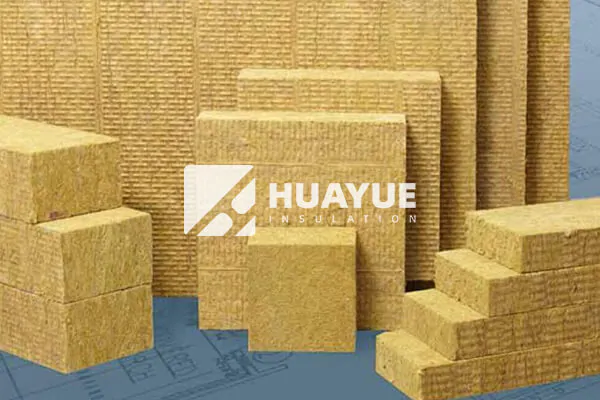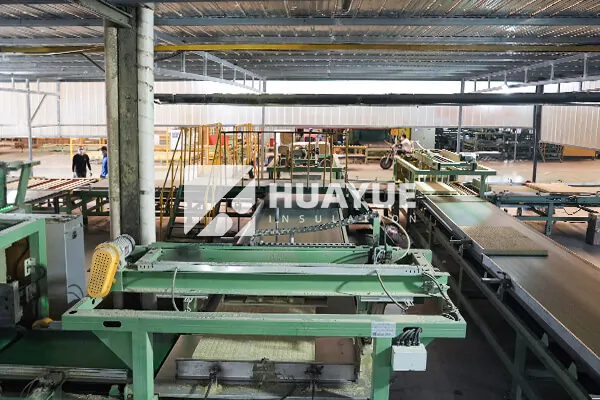How thick should rock wool insulation be?
Many project managers worry about picking the right thickness for rock wool insulation. This choice matters for thermal performance, noise control, and cost.
The ideal rock wool insulation thickness depends on where you use it: walls, ceilings, tanks, or pipes. Most applications use thicknesses between 1 inch and 6 inches. Thicker rock wool gives better insulation but costs and installation require careful planning.

Choosing thickness is not just a technical decision. The right thickness makes a difference for heat loss, condensation, and noise. If you go too thin, energy escapes and costs rise. If you go too thick, you might spend more and complicate installation. I always find that starting with the basics—the application and performance goal—guides the most practical answer.
What thickness is best for wall and ceiling insulation?
People often ask how thick they need the rock wool for their walls and ceilings. Homeowners and builders want quiet rooms and lower electricity bills.
For most buildings, HUAYUE recommends using rock wool batts 3.5 inches to 6 inches thick in walls and ceilings. Thicker batts mean higher R-values, more comfort, and less noise.

The wall and ceiling insulation choice depends on your goal. If you are looking for warmth in a cold climate, you should pick the thickest option you can afford and fit into standard framing. In a mild climate, 3.5-inch batts may already help. Most homes and offices use batts between 3.5 and 6 inches because they fit between common wall studs or joists. In old houses, the cavity depth may limit you, but newer buildings have deeper cavities, so thicker insulation is possible.
Thicker batts also work better for noise. Rock wool’s dense structure blocks sounds from neighbors or traffic. People use batts up to 6 inches to create quiet music rooms or studios. In ceilings, layering different batt thicknesses is possible to reach the target R-value. Batts keep their shape and do not settle over time, which keeps the insulation effective for decades.
| Wall / Ceiling Location | Recommended Thickness | Performance Focus |
|---|---|---|
| Exterior Wall | 4" – 6" | Thermal/Acoustic |
| Interior Wall | 3.5" – 6" | Acoustic |
| Ceiling (Layered) | 3.5" + 6" | Highest R-Value |
How thick should rock wool be for industrial tanks and pipes?
Engineers and plant managers are always searching for a long-lasting insulation that guards tanks, pipes, and equipment. The aim is to keep heat inside, avoid safety hazards, and prevent corrosion.
Industrial equipment like tanks and pipes often use 2-inch thick rock wool boards from HUAYUE. For higher temperatures or more severe needs, thicker boards—up to 4 inches—can be used.

I spoke with Hans Müller, a chief engineer in Germany, who manages cryogenic tanks for a global chemical company. He always checks CUI risks, fire codes, and long-term weather exposure before picking insulation. He also knows thicker rock wool boards do more than keep tanks and pipes warm. They stop condensation, prevent corrosion, and extend service life by decades.
Browse any facility, and you will notice two-inch boards for tanks holding water, oil, or chemicals. This thickness fits most mounting brackets, withstands bad weather, and lasts through cleaning cycles. However, if you have intense cold or heat—like in LNG storage or steam pipelines—using 4-inch boards is smarter. HUAYUE’s dense rock wool resists compression and carries weight, which lets the boards last longer and saves on repairs.
| Industrial Application | Recommended Thickness | Key Benefits |
|---|---|---|
| Storage Tanks | 2" – 4" | Anti-corrosion, Thermal |
| Chemical Pipes | 2" – 4" | Fire-resistance |
| Cryogenic Storage | 4"+ | Maximum insulation |
What thickness works for irrigation, greenhouses, and special systems?
Growers and facility managers want insulation that saves heating costs and keeps water at the right temperature. Rock wool is common for these jobs because it does not absorb water and lasts in outdoor use.
For irrigation strips and greenhouse pipes, HUAYUE rock wool usually comes in 1-inch thickness. This is enough to slow heat loss and keep water lines from freezing or overheating.
Growing food or flowers inside a greenhouse means you have many climate variables to handle all year. Thin rock wool strips—just one inch thick—hug the irrigation pipes and are easy to install. You can wrap them in foil or leave them bare. They keep root zones warmer in winter and cooler in summer. Water evaporates less, and pumps last longer. Farmers use the same thickness for heating system pipes, ensuring every part of the greenhouse or garden gets water at the right temperature.
Specialty systems sometimes use 2-inch boards, mainly for larger diameter pipes or when the climate is harsher. Always match the insulation to the diameter of the pipe or duct, and pay attention to water pressure or sun exposure.
| Special Application | Recommended Thickness | Use |
|---|---|---|
| Greenhouse Pipes | 1" | Retain heat, avoid freezing |
| Irrigation Systems | 1" | Reduce heat gain/loss |
| Heating Systems | 1" – 2" | Extend equipment life |
Conclusion
For every project, the right rock wool thickness depends on where you use it and your insulation goals. Thicker options give more protection and efficiency.
You may also be interested in:
Ready to Get Started?
Get in touch with our experts for personalized solutions tailored to your needs.
Get Free QuoteLatest Articles

Fiberglass Insulation Roll - What’s Inside the Roll?
Dec 22, 2025
Let's Work Together
Ready to take your business to the next level? Get in touch with our team of experts and let's discuss how we can help you achieve your goals.
Get Free Solutions






